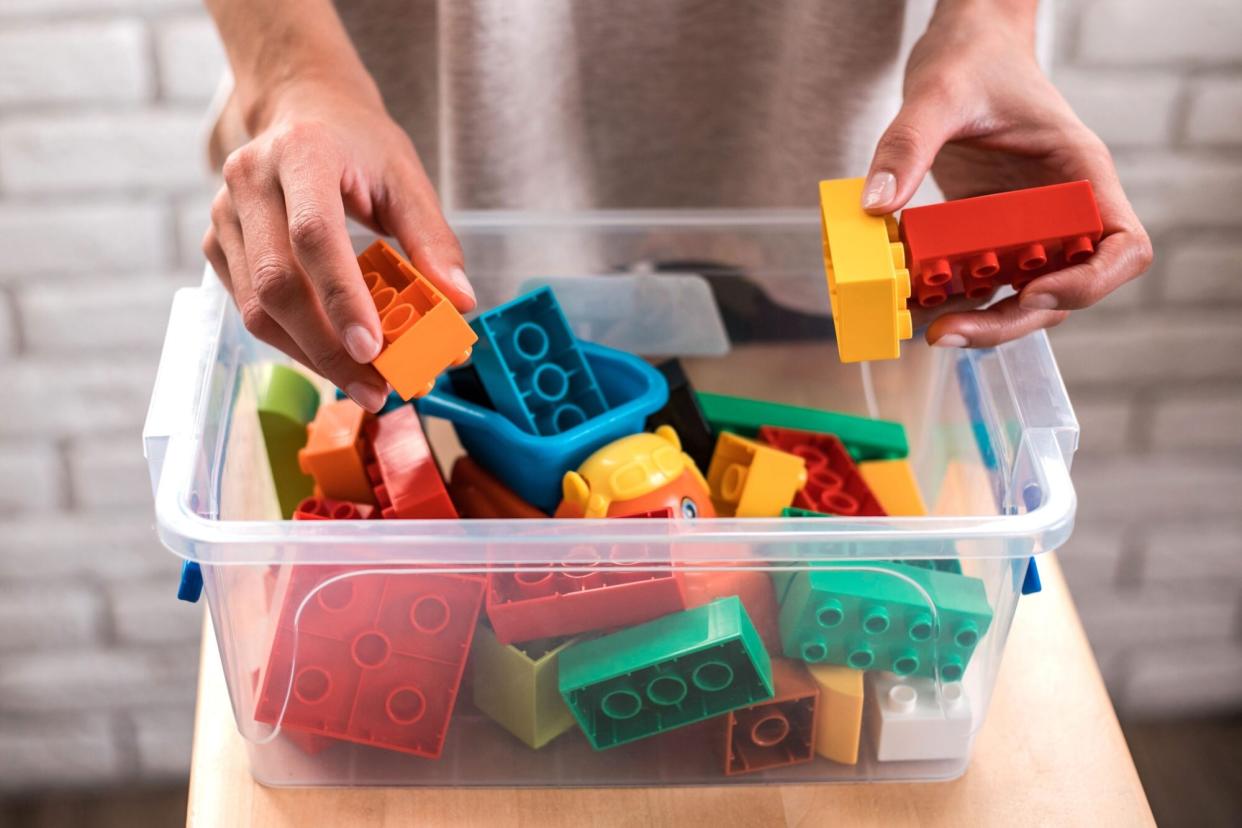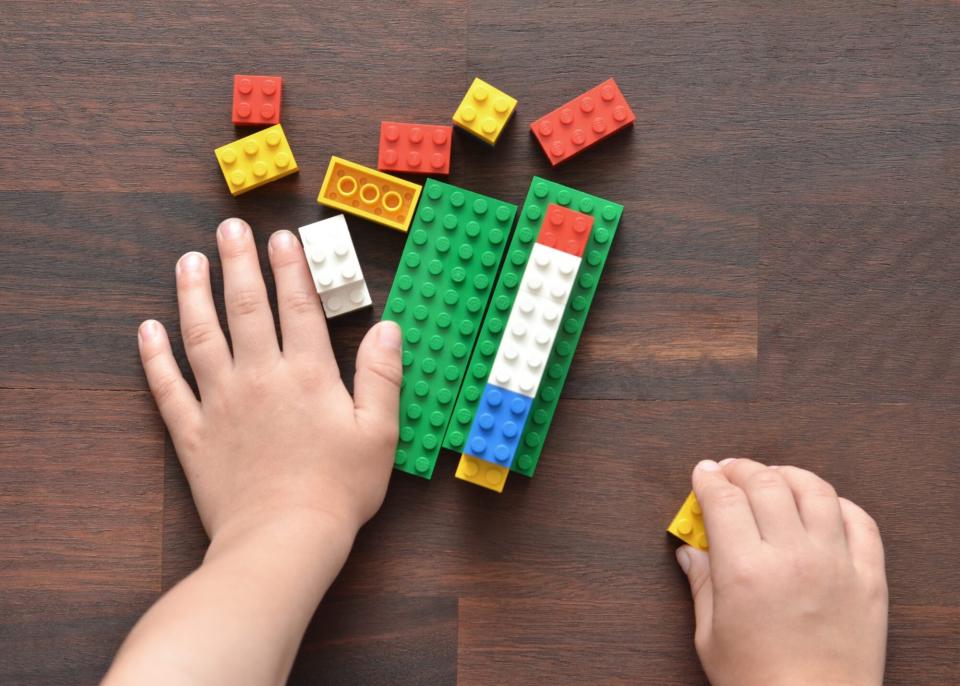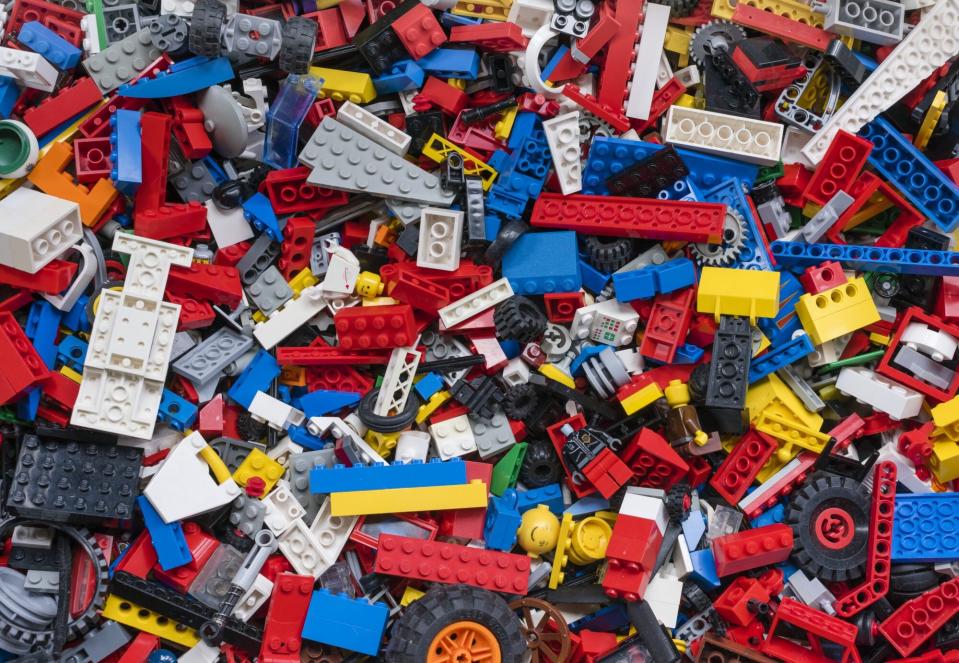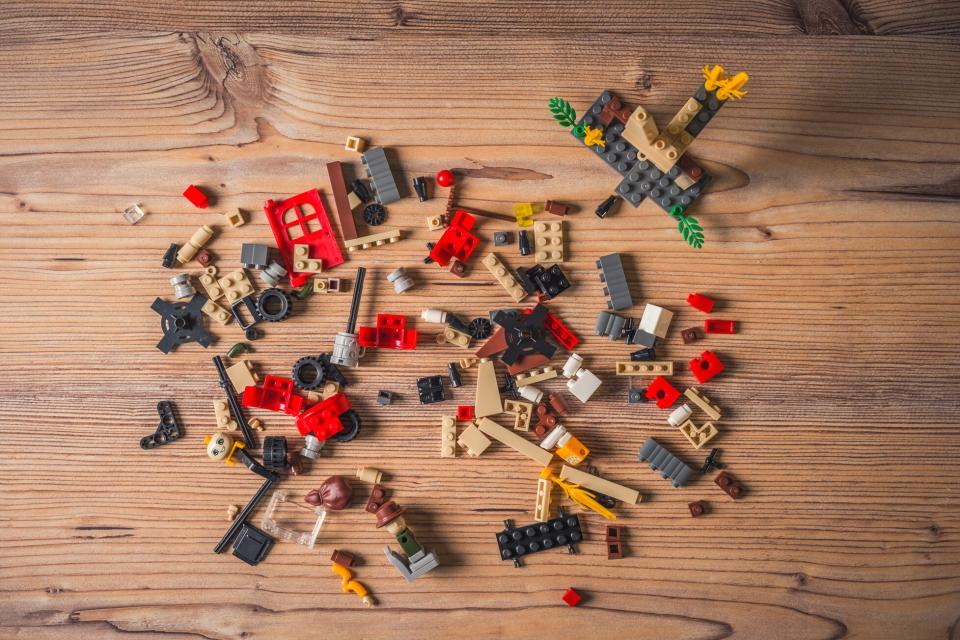How to Clean LEGOs, Kids' Toys That Collect Dust and Germs Fast

GETTY IMAGES
TABLE OF CONTENTS
On This Page
Why It's Important to Clean LEGOs
How to Clean
How to Dust
How to Sanitize and Disinfect
Professional Care
Does your family love LEGOs? These renegade bricks are fun for kids and adults alike, and come in handy during game nights and creative play. If they're getting a lot of love, you'll want to make sure that they stay clean and sanitized (especially if you have little ones who tend to put their toys near their mouths!). And while it's key to clean loose pieces, it's just as important to keep tabs on already-built models, since your plastic masterpieces can accumulate dust over time.
To help you figure out every step of the LEGO cleaning process, we tapped cleaning experts to share their best tips and tricks.
Related: Tired of Stepping on LEGOs? Learn How to Organize the Building Blocks Once and For All

AnthonyRosenberg / Getty Images
Why It's Important to Clean LEGOs
If you're an adult LEGO enthusiast, you likely take great care in maintaining your models—but cleaning these blocks regularly is particularly critical if kids use them most, says Vera Peterson, the president of Molly Maid, a Neighborly company. "As we all know, children are highly likely to put toys in their mouths," she says. "That makes it especially important to disinfect these toys, including LEGOs, since they can have bacteria on them."
As you clean, think beyond traditional LEGO blocks, notes Mary Gagliardi, also known as "Dr. Laundry," Clorox's in-house scientist and cleaning expert; similar models or alternative pieces require your attention, as well. "In addition to regular LEGO bricks, larger Duplo blocks used (and shared!) by younger children can be sanitized or disinfected to help prevent the spread of illness in childcare settings," she says. "Because they are made of hard, non-porous plastic, they can be safely treated with the appropriate bleach and water solution."

EThamPhoto / Getty Images
How to Clean LEGOs
The first rule of thumb when cleaning your LEGOs is to protect them from heat. "Since LEGOs are plastic, hot water can warp the pieces and make them ineffective," says Peterson. "The best and safest way to clean LEGOs is by hand; throwing them in the dishwasher could potentially jam your machine and damage your pieces or cause you to lose them altogether." Once you have this down, make sure to clean these pieces once a week, especially if they are used daily.
Materials You'll Need
Brick separator
Plastic dishpan
Measuring spoons
Dish detergent
Large white bath towels
Here's how to clean your LEGOs, according to Gagliardi:
Use the brick separator to break apart bricks into individual pieces and add them to the first dishpan.
Add a teaspoon of dish detergent to the dishpan with the LEGOs.
Fill the dishpan with water no hotter than 104℉ (per the LEGO website).
Swirl or stir the bricks in the detergent solution for three to five minutes.
Pour off the detergent solution, and then rinse with clean water until the water is clear and free of suds.
Lay cleaned bricks on the white bath towel and allow to air dry completely. This can take a few days because of all the space on the underside of a brick that can trap water—periodically rotating the bricks on the towel will help speed this up. Setting up a fan to circulate air over the bricks will also help shorten the drying time.
How to Dust Legos
You should routinely dust any LEGOs you have on display, as they gradually gather dust. "All the corners and bumps and unique shapes aren't the easiest surfaces to clean, making it easier for dust to build up if they aren't dusted routinely," says Gagliardi. "Note that for routine dusting, sets are not taken apart."
Since this process is extensive and thorough, you can dust LEGO models just once every month, says Gagliardi.
Materials You'll Need
Vacuum with hose attachment
Nylon netting
Rubber bands
Makeup brush
Blow dryer
Disinfectant wipes
Follow these steps to dust your LEGO pieces:
Move the model or set to a larger work area (like a kitchen counter) where you can easily rotate it and open doors or separate into sections (as with a modular set), says Gagliardi.
Stretch the netting over the end of the hose attachment on the vacuum and secure it with the rubber band. This will stop any small pieces from getting accidentally sucked into the vacuum.
Starting at the top of the set, use the makeup brush to brush off the dust, rotating as needed to clean the entire build. Tip: Use the vacuum to immediately suck up the dust by holding the nozzle close to the brush as you dust. Working in a well-lit area makes it easier to see the dust and vacuum it up, too.
Some sets may require using a blow dryer on the cool setting to work the dust out of the interior of a model where the brush won't fit, especially if it hasn't been cleaned routinely.
Use Clorox Disinfecting Wipes to clean the hard, non-porous surface (like painted wood, glass or plastic) where the set is displayed before replacing it.

Getty Images/mustafagull
How to Sanitize and Disinfect LEGOs
Again, it's essential to rid your LEGOs of germs—but cleaning, disinfecting, and sanitizing aren't the same. You can disinfect and sanitize your blocks using the same supplies as noted above for routine cleaning, plus a few more. "[You] can easily sanitize LEGO bricks with a bleach and water solution because they are hard non-porous plastic," says Gagliardi. This is something you should do if your child had a playdate with a friend who had a runny nose—or if you're an adult getting some hand-me-down blocks, disinfect them before adding them to your inventory.
Materials You'll Need
Brick separator
Two plastic dishpans
Measuring cup
Dish detergent
Large white bath towels
Plastic gloves
Disinfecting bleach
Follow these steps to sanitize and disinfect your LEGOs:
Use the brick separator to break apart bricks into individual pieces and add them to the first dishpan.
Add a teaspoon of dish detergent to the dishpan with the LEGOs.
Fill the dishpan with water no hotter than 104℉ (per the LEGO website).
Swirl or stir the bricks in the detergent solution for three to five minutes.
Pour off the detergent solution, and then rinse with clean water until the water is clear and free of suds.
Prepare the sanitizing solution: Wearing the gloves, add 2 teaspoons Clorox Disinfecting Bleach to 1 gallon of water (use the measuring cup and measuring spoons to make sure you have the correct amount of bleach and water).
Submerge the LEGOs in the sanitizing solution for two minutes. If you are disinfecting, submerge the pieces in the solution for six minutes.
No rinsing is necessary when sanitizing. If you are disinfecting, pour off the disinfecting solution and then rinse the bricks thoroughly several times with clean water.
Transfer the bricks to the white towel and allow to air dry.
Professional Care
Professional care is recommended if your plastic bricks are discolored (especially if they are vintage or a collector's item), but for the most part, you can safely clean LEGOs at home. Bricks that include electronic or metal components, however, should only be dusted. "This would apply to the now-discontinued 9-volt train tracks that are extremely valuable to collectors, as well as any motors," says Gagliardi. "It also applies to bricks with stickers, which will come off in a detergent and water or bleach and water solution."
And if you find that a few blocks are missing or broken as you clean? Contact LEGO—the company offers replacement blocks for a fee.

